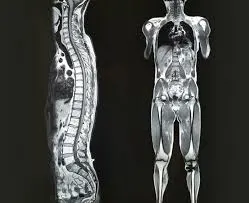How to Interpret Whole-Body MRIs: 3 Essential Techniques
Understanding whole-body MRIs is vital for comprehensive health assessments and accurate diagnoses. This guide introduces you to the benefits of whole-body MRI scans and explains three essential techniques for interpreting these extensive images.
Understanding Whole-Body MRIs
A whole-body MRI provides a thorough overview of the entire body, offering detailed images of bones, soft tissues, and organs. This section outlines what whole-body MRIs are and their advantages for diagnosing various conditions.

What Do Whole-Body MRIs Show?
- Soft Tissue Detail: Superior imaging of muscles, ligaments, and organs.
- Organ Assessment: Clear visualization of internal organs, aiding in the diagnosis of systemic diseases.
- Bone Marrow Changes: Detects changes within the bone marrow not visible on X-rays.
- Disease Detection: More effective in identifying infections, tumors, and systemic diseases.
When Will You Get One?
- Unexplained Symptoms: Especially if multiple areas of the body are affected.
- Cancer Screening: Useful for detecting metastatic disease.
- Chronic Conditions: Monitoring disease progression in conditions like multiple sclerosis.
- Comprehensive Check-Ups: Provides a complete health assessment in a single scan. For individuals experiencing irregular heart symptoms, using an ECG at home before undergoing a whole-body MRI can provide early insights into potential cardiac issues.
Techniques to Interpret Whole-Body MRIs
Interpreting whole-body MRIs involves advanced imaging techniques. Here are three methods for professionals at different expertise levels.
1. Utilizing X-ray Interpreter
X-ray Interpreter extends its AI-driven analysis to MRI images. The process ensures precision:
- Registration: Register on X-ray Interpreter to access AI analysis for MRIs.
- Uploading MRIs: Upload your whole-body MRI images.
- Reviewing Interpretation: Receive the AI-generated interpretation and download your report.
- Professional Consultation: Always advisable to consult with medical professionals for comprehensive understanding.
Please check out our get started guide.
2. Using ChatGPT Plus
ChatGPT Plus supports MRI image analysis with its latest GPT-4V model, offering detailed and interactive insights:
- Subscription: Subscribe to ChatGPT Plus for advanced image analysis features.
- Uploading MRIs: Interface with GPT-4V on OpenAI to upload your MRI images.
- Requesting Analysis: Engage with the model for a thorough analysis.
- Review and Confirmation: Assess and refine the analysis as needed.
- Professional Validation: Validation by medical experts is recommended.
Read more on our post about using ChatGPT Plus for MRI interpretation.
Alternatively, as several other AI models with vision capabilities emerge, you can also try other models, such as Grok by xAI, Claude by Anthropic, Gemini by Google Deepmind.
3. Mastering MRI Interpretation Yourself
For healthcare professionals aiming to enhance their MRI reading skills, self-learning is invaluable:
- Education: Pursue advanced training in MRI interpretation.
- Practice: Regular practice under expert guidance.
- Resources: Utilize advanced imaging books and online courses.
- Feedback: Seek feedback to refine skills.
- Continuous Learning: Engage in ongoing education to stay current with imaging techniques.
Recommended Resources for Self-Learning:
-
Whole-Body MRI: Techniques and Clinical Applications - ScienceDirect: A detailed exploration of whole-body MRI techniques and clinical applications, ideal for professionals seeking in-depth understanding.
-
Full-Body MRI Scans: What You Need to Know - Dana-Farber Cancer Institute: An informative guide discussing the benefits, procedure, and applications of full-body MRI scans.
-
What Is a Whole Body MRI Screening and Why Should You Get One? - Ezra: This article explains the process, benefits, and considerations of whole-body MRI screening for preventive health care.
Comparative Analysis
Choosing the right technique for interpreting whole-body MRIs is crucial for accurate diagnosis. This section compares the three methods:
| Criteria | X-ray Interpreter | ChatGPT Plus | Self-Reading |
|---|---|---|---|
| Accuracy | High (AI-based)1 | High (AI-based)1 | Varies (Skill-dependent) |
| Ease of Use | Easy | Moderate | Challenging |
| Cost | Starting from $2.50 per image | $20 per month | Free (excluding educational costs) |
| Time Efficiency | Fast | Moderate to Fast | Slow to Moderate |
| Learning Curve | Low | Low to Moderate | High |
| Additional Resources | Provided | Partially Provided (through OpenAI) | Self-sourced |
Each method has its strengths and weaknesses, with AI options providing rapid and precise interpretations, while self-reading encourages in-depth learning for medical professionals.
Conclusion
Whole-body MRI interpretation is critical for diagnosing complex conditions. This guide presents three techniques suited to different professional needs and skill levels. AI methods offer quick, precise interpretations, while self-learning is geared towards those seeking in-depth knowledge.
When selecting a technique, consider your level of expertise, the need for timely interpretation, and the resources available. Ethical and legal standards must always be maintained to ensure patient safety and confidentiality.
Related Articles
Resources and Further Learning
For further exploration and understanding of whole-body MRI interpretation, consider the following resources:
-
Will a Full-Body MRI Scan Help You or Hurt You? - The New Yorker: This article discusses the pros and cons of full-body MRI scans, providing a balanced view on their utility and potential risks.
-
Full-Body MRI Scan & Diagnosis - Vista Health: Provides comprehensive information about the procedure, benefits, and what to expect from a full-body MRI scan, aimed at both patients and healthcare professionals.
-
Whole-Body MRI Screening for Early Detection of Cancer and Other Diseases - ScienceDirect: Offers an in-depth analysis of the effectiveness of whole-body MRI screenings in early detection of various conditions, focusing on clinical applications and outcomes.